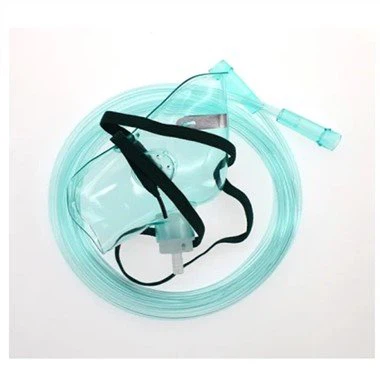What Is A 20 Ml Syringe Used For?
Dec 18, 2023
Introduction
If you have ever been to a hospital or a medical facility, you might have seen medical professionals using a syringe to administer medicines or draw blood. Syringes are small, calibrated tubes that are used to measure and inject liquids or fluids. There are different kinds of syringes available in the market, which are used for different purposes.
One of these syringes is the 20 ml syringe, which is commonly used in the medical field. In this article, we will discuss the different uses of a 20 ml syringe, its parts, and how to use it properly.
What is a 20 ml syringe?
A 20 ml syringe is a type of syringe that can hold up to 20 milliliters of liquid. It is made up of different parts, including the barrel, plunger, and the needle. The barrel is the cylindrical part of the syringe that has markings or graduations to read the volume of the liquid that is being measured or injected. The plunger is the piston-like structure that fits perfectly inside the barrel, and it can be pulled or pushed to draw or inject the liquid. The needle is the sharp, pointed part of the syringe that is attached to the barrel and used to pierce the skin for injecting or drawing fluids.
Uses of a 20 ml syringe
A 20 ml syringe has many uses in the medical field, and some of the most common ones are mentioned below.
1. Administering medications
Medical professionals often use 20 ml syringes to administer medications to patients. The syringe allows them to measure the exact amount of medication that is required, and the needle can be inserted into a vein or muscle for the medication to be delivered directly into the bloodstream.
2. Drawing blood
Another use of a 20 ml syringe is to draw blood from a patient''s veins. In this case, the needle is inserted into the vein, and the plunger is pulled to create a vacuum that draws the blood into the barrel. This is a common practice in medical facilities as it allows doctors to analyze the blood for various health conditions.
3. Flushing catheters or feeding tubes
A 20 ml syringe is also used for flushing out catheters or feeding tubes. In this case, the syringe is filled with sterile saline solution, and the needle is carefully inserted into the tube. The solution is then pushed into the catheter or feeding tube to clear any blockages or debris.
4. Irrigation of wounds
In cases where patients have wounds that need cleaning, a 20 ml syringe can be used for irrigation. The syringe is filled with sterile saline solution or wound cleaning solution, and the needle is carefully inserted into the wound. The solution is then pushed into the wound to clean it thoroughly.
How to use a 20 ml syringe
Using a 20 ml syringe requires precision and care. Here are the steps that should be followed when using a 20 ml syringe.
1. First, wash your hands thoroughly and put on gloves and other protective gear if required.
2. Check the packaging of the syringe to ensure it is clean and not damaged.
3. Remove the syringe from its packaging and attach the needle to the barrel. Make sure the needle is secured tightly.
4. Position the syringe with the plunger pointing upwards, and pull back the plunger to the required level to measure the liquid.
5. Insert the needle into the target location, whether it be a vein, catheter, feeding tube, or wound.
6. Slowly push the plunger to inject the liquid, or pull back on the plunger to draw out liquid.
7. Once the procedure is completed, remove the needle carefully and dispose of the syringe and needle in a puncture-proof container.
Conclusion
In conclusion, a 20 ml syringe is a versatile medical tool that is used in various medical facilities. It is used for administering medications, drawing blood, flushing catheters or feeding tubes, and irrigating wounds. Using a 20 ml syringe requires precision and care, but following the right steps can ensure its safe and efficient use. It is essential to dispose of the syringe and needles properly to prevent needle-stick injuries and infections.







